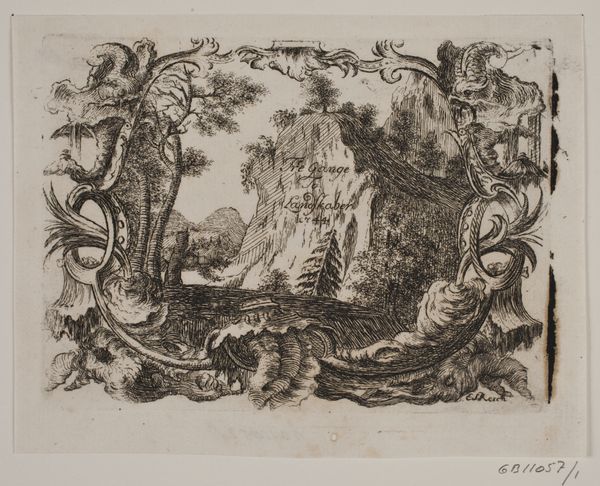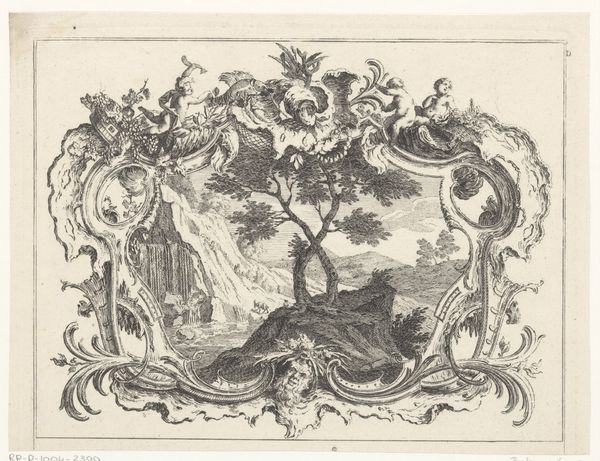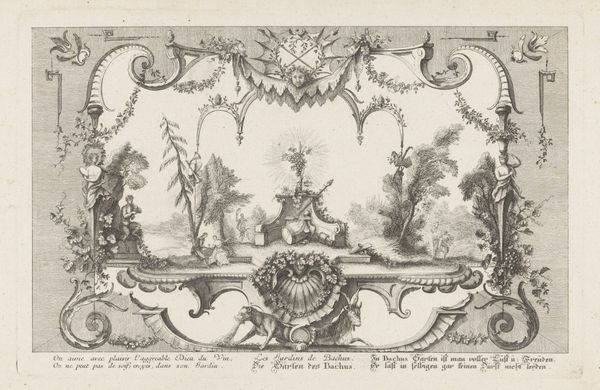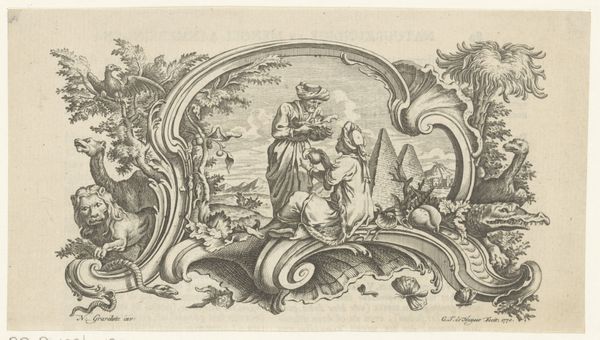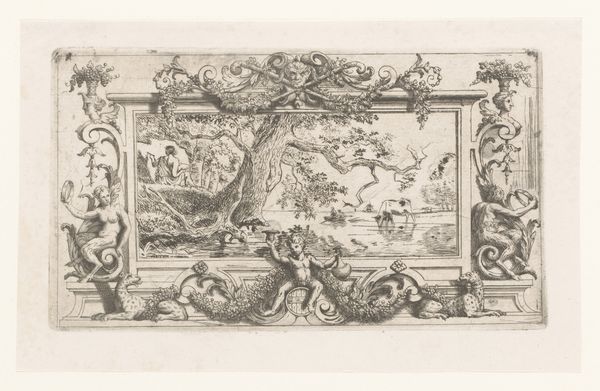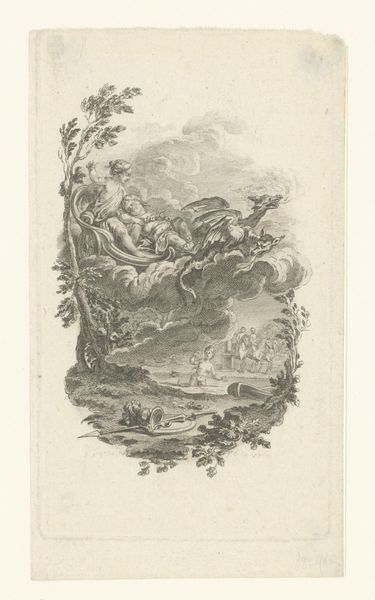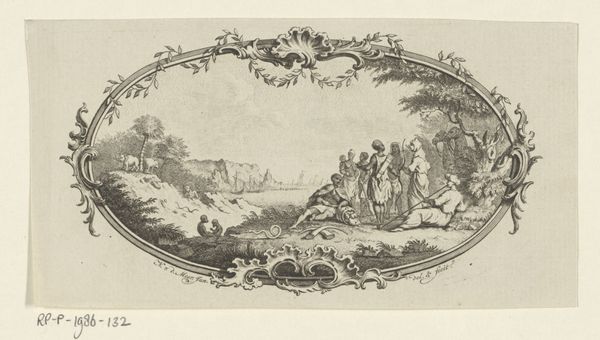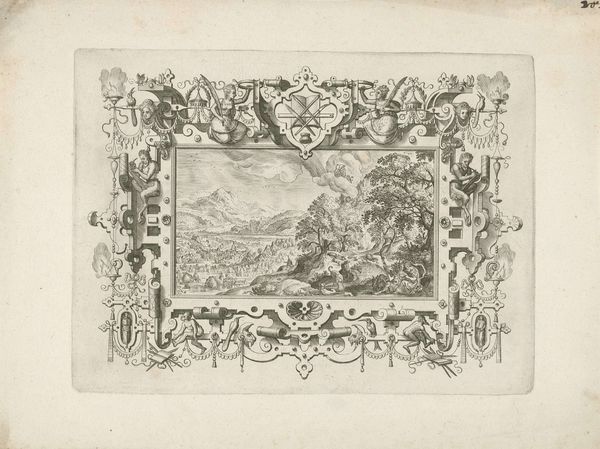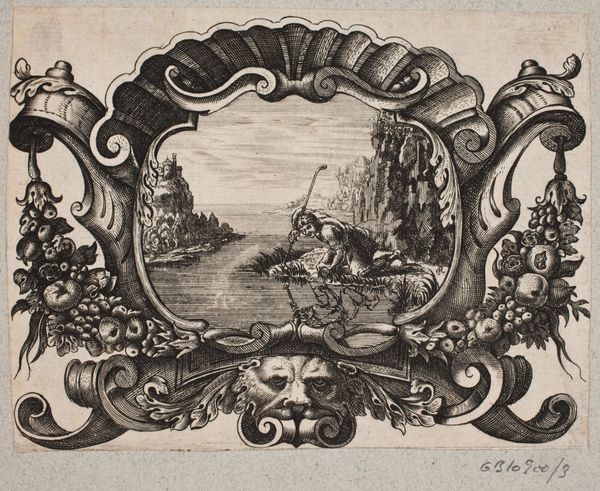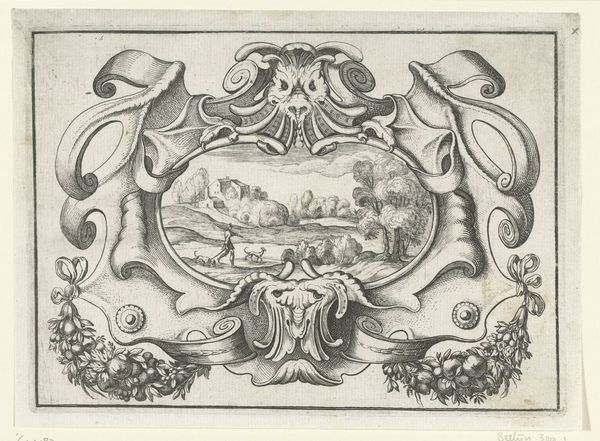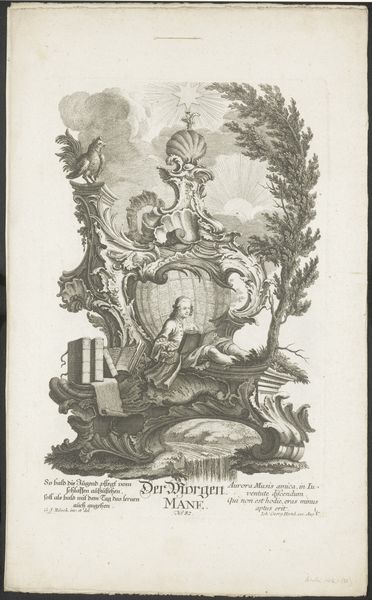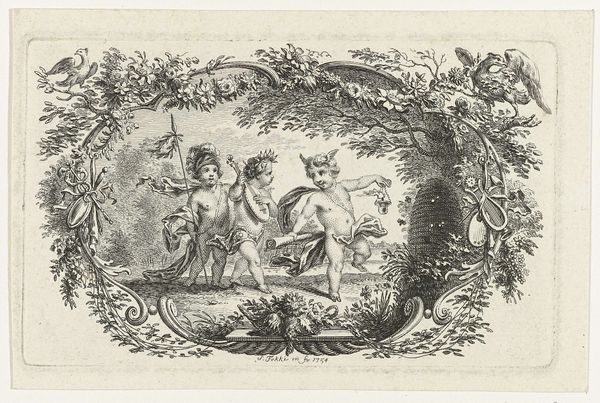
drawing, etching, ink, engraving
#
drawing
#
baroque
#
pen drawing
#
etching
#
landscape
#
ink line art
#
ink
#
mountain
#
engraving
Dimensions: height 177 mm, width 231 mm
Copyright: Rijks Museum: Open Domain
Editor: So, here we have Carl Albert von Lespilliez's "Berglandschap" from 1745, currently residing in the Rijksmuseum. It’s an intricate landscape created using ink, etching, and engraving techniques. What strikes me immediately is the incredibly detailed frame surrounding the mountain scene – it's almost like two artworks in one. How does the way this piece was constructed affect its meaning for you? Curator: The dual nature of this work highlights a fascinating tension between fine art and craft. The landscape itself, rendered with etching and engraving, relies on established traditions of artistic skill and representation. But then we consider the frame, arguably just as meticulously crafted, that incorporates design elements typically seen in furniture or decorative arts of the period. Editor: Interesting! So you're saying that the material choices challenge a hierarchy. Curator: Precisely. The etching and engraving are the ‘art’ and yet the materials and processes of creating the frame require just as much artistry, craftmanship, and labour. The landscape, contained within the frame, almost becomes another commodity presented for consumption. It invites us to consider who was accessing such images, and in what contexts they were being viewed. This wasn’t just about appreciating natural beauty, it was about owning and displaying a representation of it, filtered through layers of material production and social status. Editor: So it makes you think about the socioeconomic factors in creating art. Who makes the art, who buys the art, and how is the making itself a statement? Curator: Exactly! And let’s not forget the labour involved. Each line in that etching, each flourish in the frame, represents someone's time, skill, and effort. Exploring these aspects allows us to engage with this piece on a deeper, more socially conscious level, challenging our assumptions about the role of art in society. Editor: This has really shifted my perspective; I initially saw just a pretty landscape, but now I recognize the artistic labour involved and social stratification. Curator: It is easy to appreciate for its surface beauty, but there's so much more beneath the surface if we consider production and materiality.
Comments
No comments
Be the first to comment and join the conversation on the ultimate creative platform.
